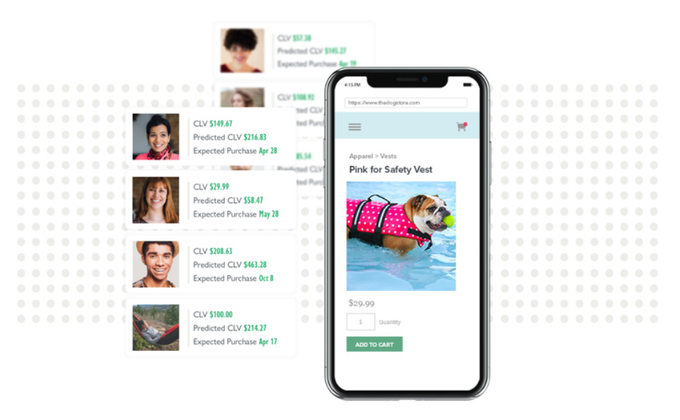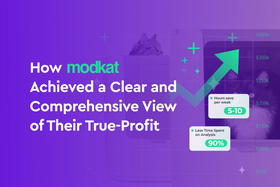Email Marketing Best Practices—How to Improve Your ROI
Updated April 26, 2023

Email marketing takes some skill – if you aren’t doing it right, you actually may be doing more harm than good.
Of course, it doesn’t take a computer genius to figure out what it takes to be a successful email marketer.
What’s the secret to B2C marketing? Join us as we take a deep dive into the world of email marketing best practices, just below.
Not sure if your business focus should be B2C or B2B? Read our guide to the four main types of e-commerce business models.
Different Types of B2C Email Marketing Campaigns
The first step to developing a successful B2C email marketing campaign (EMK for short) is to decide on which type of EMK is best fit for your intended audience and specific goals.
Are you looking to resolve online shopping cart abandonment? Trying to up-sell by targeting first-time customers? Are you asking for feedback from your regular customers? Maybe you just want to stay in touch with your customers so they don’t forget about you!
Whatever the reason or audience is for your B2C email marketing campaign, there’s a type of EMK that will fit your needs and goals.
Here are just a few examples:
Newsletter
A key characteristic of a successful SEO strategy is to create a blog and publish articles on a consistent basis. While the targeting of keywords will help improve your search engine rankings, that’s not the only way for you to use your unique content.
Keep your customers engaged with your website by drawing them in with weekly, bi-weekly, or monthly newsletters that provide a summary of your recent blog articles. There’s really no rule or limit as to the type of newsletters you can potentially send out – find creative ways to give your readers a reason to stay tuned for the next newsletter. Ideally, a continuous interest in what you have to say will eventually turn those readers into repeat customers.
Cart Abandonment
The issue of online shopping cart abandonment in the e-commerce industry is one that all online sellers should pay serious attention to. Why? Because close to 90% of all online shopping orders worldwide were abandoned in March 2020, which makes it clear how important it is for online businesses to tackle this problem head-on.
Cart abandonment emails might seem like a somewhat passive way of reaching out to clients, but they’re actually a remarkably effective way of bringing ‘abandoners’ back to complete their purchases. In fact, more than 40% of cart abandonment emails are opened, and more than 8% of abandoners end up making the buy. Cart abandonment might be unavoidable, but it can be addressed by using B2C email marketing.
Loyalty Program
If publishing newsletters isn’t the way you want to go, creating a loyalty program can be an alternative way of using business email lists to keep customers coming back to your online store. This email strategy makes use of the classic principle of ‘you scratch my back and I scratch yours’.
Try sending email alerts to your current regular customers giving them unique coupon codes (which will also make them feel special!). To encourage your first-time or not-so-regular customers to come back again and become regular shoppers, you can send emails informing them of your store’s loyalty program. Or, you can give them a ‘sample’ discount and tell them the discount is higher for return customers. Again, creativity is a powerful tool when it comes to B2C email marketing!
Announcements
Introducing a new product to your store? Bringing back a classic item that everyone loved? Launching a brand new feature to make the user experience more exciting? Whatever the announcement is, it’s almost always a good excuse to reach out to your customers and keep them in the loop. Granted, you don’t want to make a mountain out of every mole hill your business comes across – be somewhat selective.
Ultimately, the goal of announcement emails is to share some energy with your customers and draw them in to take part in this “new and exciting” event taking place on your website. Your business email lists can be split up so that you can test different sorts of announcements to see which get the best engagement.
Sales
Make the customers on your business email lists eager for your next email by making special sales part of what they can expect to get from your online store. You can launch season-ending sales campaigns that will help you empty your inventory of items that won’t be in demand the next season. Make the most of holidays. And, of course, be prepared for Black Friday!
Another way that using sales can be incorporated into your email marketing best practices is to raise your prices a bit and then offer an exclusive sale for a limited time to encourage your customers to purchase some of your more profitable items. This isn’t to ‘trick’ the customer – the products should be priced fairly so as not to be taking advantage of anybody. But there are ways to weave sales into your business’s broader emailing marketing and pricing strategies.
Personalized emails
Who doesn’t enjoy feeling like a VIP? Thanks to the power of technology, you can make your customers feel special with very little effort. There are plenty of apps and plugins you can add to your online store and use to pull customer data such as names, birthdates, locations, device use, and much more. With that data, you can create B2C email campaigns that have a personal touch to them.
Address customers by their first name to sound more friendly. Automatically send out happy birthday promotions to put a smile on your customers’ faces. Target certain products for customers in specific geographic locations to increase sales (e.g. swimsuits for customers in Florida, winter gear for customers in the Mid-West, etc.). As with the other email marketing best practices, personalized emails depend on a fair bit of creativity to really pack a punch. Don’t be afraid to try something new.
Prioritize Email Marketing for Better ROI
Business email lists and B2C email campaigns aren’t the only ways to market your e-commerce business (far from it!). Other e-commerce advertising strategies include:
- Pay per click (PPC)
- Affiliate marketing
- Social media marketing
- Content marketing
- Etc.
So why all the fuss about email marketing?
It turns out that email marketing has continued to rank as the most cost-effective form of digital marketing for quite some time, with a median ROI of roughly 122%. That’s an impressive figure, particularly when you consider the fact that no other form of digital marketing has such a high return on investment.
These stats serve as a pretty clear reason for you to prioritize email marketing! Yes, a diversified marketing strategy will work best – but just make sure that you don’t underestimate the importance of keeping emails as a key component.
Note: If your email marketing strategy is working well, but you need some extra cash to get started with a new e-commerce marketing strategy, consider using an e-commerce business loan to bridge the financial gap. E-commerce businesses have had a notoriously difficult time finding funding in the past, but BeProfit's online lending marketplace is changing that.
» Find out 4 ways to increase your marketing ROI with dynamic pricing
Analyze Data of Email Marketing Campaigns
Having tons of data about your customers and the performance of your B2C email campaigns doesn’t serve much of a purpose unless you learn how to analyze that data to come up with useful insights.
What are ‘useful insights’? Any patterns that you find in the way that your customers engage with your email campaigns that can ultimately be used to improve that engagement. Okay, that’s a little vague – let’s use an example to make this point more concrete.
Let’s say you’ve sent out a number of emails to your customers over the past few weeks, and you notice that the highest open rates for all emails were among customers between the ages of 25 and 35 years. You can use that insight in several ways – for one, you can create different email templates to draw more engagement from customers in older age groups in order to increase their open rates. On the other hand, you could seek out ways to further capitalize on the high email open rates you already have – perhaps by adding special offers for products more targeted at younger customers.
The bottom line: If your goal is to create the best email marketing campaigns you possibly can, then analyzing data from your EMKs is an absolutely essential part of the process!
Klaviyo is a great example of an Email Marketing platform that takes analytics seriously. Its proprietary data analytics software makes use of machine learning to provide statistics with accurate predictive insights; metrics include predicted date of next purchase, number of upcoming purchases, CLV calculations, average time between orders, probability of churn, and more.
Responsive Email Marketing
Responsive email marketing is a simple idea – your emails should include a special form of coding that will allow it to display properly across all sorts of devices. After all, nobody likes to open an email and have to play around with the zooming, or read paragraphs that are broken up into weird pieces, and so on.
The visual attractiveness of an email (or lack thereof) may sound like a petty way to make a decision to give business to a company, but more than 1-in-5 people say their biggest turnoff with mobile email is when emails are poorly formatted. Combine that with the fact that more than half (60%) of all email opens are made on a mobile device or tablet, and it becomes very clear why responsive email marketing is crucial.
Customer-Centric Email Marketing
A customer-centric approach to email marketing is one that is characterized by a focus on the defining traits of the customer(s) and what makes them unique. From that humanistic perspective, marketing teams then try to find the best ways to engage with customers through emails based on those defining traits. For example, emails make be different for iPhone users as opposed to predominantly desktop-using customers. Or the tone or CTA in the email may differ depending on the customer’s age group.
Other parts of the customer-centric approach to email marketing include:
- Giving customers the ability to customize the types of emails they will receive
- Allowing customers to choose the frequency at which they receive emails from you
- Providing customers with the ability to respond to your emails with questions or comments
- And so on
The customer-centric approach is contrasted with the content-centric approach to email marketing which emphasizes a focus on the emails themselves as well as metrics such as the number of email recipients, open rates, click rates and so on. Both types of email marketing campaigns are useful in their own right, so it’s best to think critically about how each strategy matches with your audience, your business type, and your broader business goals.
Email Marketing Tips
In case you missed any details above, we wrap things up for you nicely with this short-and-sweet list of email marketing best practices. Scroll down and have a look!
1. Emphasize a Sense of Urgency
It’s always good to keep your customers feeling that the clock is ticking and time is running short. Try encouraging them to purchase when you have limited stock, or have the sale last only for a given period of time, or even make a one-time offer such as a discount on any item in your store for example. The important thing is that your customers understand that your great deals will only be available to them for a set amount of time – and that time is running lower by the minute!
2. Try Not to Use ‘No-Reply’ in Your Business’s Outbound Email Address
Don’t get confused, you can still ask your customers not to reply to those emails. The point here is that when customers see an email in their inbox, they’ll see your company name or even a representative’s name. When customers see ‘no-reply’, it can create a sense of distance and coldness as if they’re not important enough for you to hear their reply. Avoid this bad practice.
3. Keep the Typeface in Your Emails Consistent
Part of establishing a brand is consistency. Sometimes, a company’s font can become so iconic that the script can say something different but the shape of the letters will still remind customers of the company. Think about companies like Disney, Netflix, Adidas, Facebook, and so on. The same concept can and should be applied to your B2C email campaigns – choose a font that fits your liking and stick to it. Try not to stray too far from the base font by messing around with italics, boldness, or size too much.
4. Finish Your Emails With a Signature
Even for the most popular, big-name, recognizable companies, signing an email is a standard procedure. It could be signed by a representative’s name or even just your company name and the word ‘team’ (for example here we sign some of our emails as ‘Team BeProfit’). Including some sort of signature is better than nothing at all – receiving an email from an unspecified person or group may raise some suspicions for online shoppers and cause them to avoid doing business with your online store.
5. Run a Quick Test Before Sending Emails Out
Don’t get caught in a sticky situation as a result of laziness. It takes a simple matter of minutes to forward a copy of your proposed email marketing campaign to a friend or business associate for review prior to distributing to real customers. Check that your friend or coworker can quickly identify the call to action in the email. If they can, then you’re in good shape. If not, keep making adjustments until you get where you need to be.
You’ve Got Mail
Or at least your customers do! Email may be one of the oldest forms of online communication, but that hasn’t made it any less effective as a form of marketing. It’s never too late – get started with email marketing best practices today and use the information above to keep your B2C email campaigns on the right track.
Disclaimer: The information contained in this article is provided for informational purposes only, should not be construed as legal advice on any subject matter and should not be relied upon as such. The author accepts no responsibility for any consequences whatsoever arising from the use of such information.










